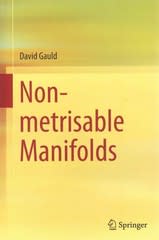Question
26. A binomial probability distribution has p = .20 and n = 100. a. What are the mean and standard deviation? b. Is this situation


26. A binomial probability distribution has p = .20 and n = 100.
a. What are the mean and standard deviation?
b. Is this situation one in which binomial probabilities can be approximated by the normal probability distribution? Explain.
c. What is the probability of exactly 24 successes?
d. What is the probability of 18 to 22 successes?
e. What is the probability of 15 or fewer successes?
27. Assume a binomial probability distribution has p = .60 and n = 200.
a. What are the mean and standard deviation?
b. Is this situation one in which binomial probabilities can be approximated by the normal probability distribution? Explain.
c. What is the probability of 100 to 110 successes?
d. What is the probability of 130 or more successes?
e. What is the advantage of using the normal probability distribution to approximate the binomial probabilities? Use part (d) to explain the advantage.
29. An Internal Revenue Oversight Board survey found that 82% of taxpayers said that it was very important for the Internal Revenue Service (IRS) to ensure that high-income tax payers do not cheat on their tax returns (The Wall Street Journal, February 11, 2009).
a. For a sample of eight taxpayers, what is the probability that at least six taxpayers say that it is very important to ensure that high-income tax payers do not cheat on their tax returns? Use the binomial distribution probability function shown in Section 5.4 to answer this question.
b. For a sample of 80 taxpayers, what is the probability that at least 60 taxpayers say that it is very important to ensure that high-income tax payers do not cheat on their tax returns? Use the normal approximation of the binomial distribution to answer this question.
c. As the number of trails in a binomial distribution application becomes large, what is the advantage of using the normal approximation of the binomial distribution to compute probabilities?
d. When the number of trials for a binominal distribution application becomes large, would developers of statistical software packages prefer to use the binomial distribution probability function shown in Section 5.5 or the normal approximation of the binomial distribution shown in Section 6.3? Explain.
32. Consider the following exponential probability density function.


Step by Step Solution
There are 3 Steps involved in it
Step: 1

Get Instant Access to Expert-Tailored Solutions
See step-by-step solutions with expert insights and AI powered tools for academic success
Step: 2

Step: 3

Ace Your Homework with AI
Get the answers you need in no time with our AI-driven, step-by-step assistance
Get Started


